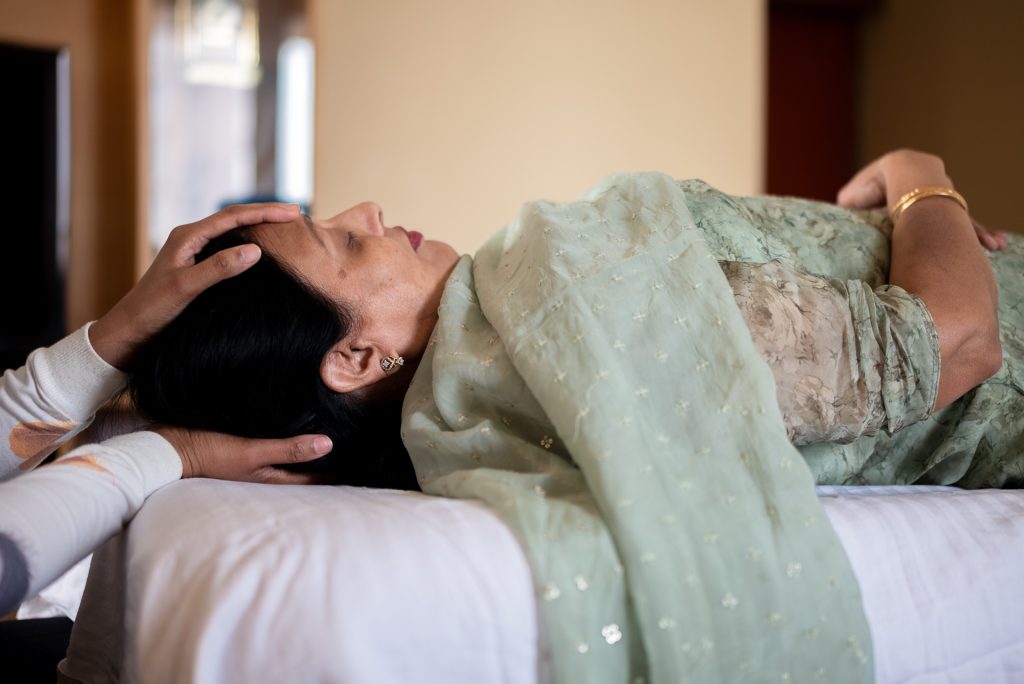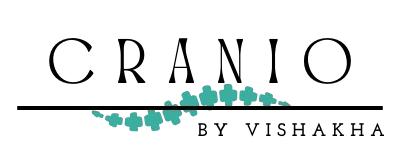Exploring BCST: The Healing Power of Craniosacral Therapy

Exploring BCST: The Healing Power of Craniosacral Therapy BCST is a powerful therapeutic approach that has been gaining recognition and acceptance for its ability to support and enhance the body’s natural healing processes. While it may sound like an alternative or unconventional treatment, BCST has found its place in the world of holistic health, offering relief from a wide range of physical and emotional ailments. This article delves into what BCST is, how it helps people, and why this therapy is worth considering for your health and well-being. What is BCST (Biodynamic Craniosacral Therapy)? Biodynamic Craniosacral Therapy (BCST) is a refined form of craniosacral therapy that works with the body’s natural rhythms and movements. Unlike traditional massage therapies or chiropractic treatments that focus on muscular manipulation or bone alignment, BCST centers on the craniosacral system—the membranes and fluid surrounding the brain and spinal cord. By gently working with the rhythm of this system, BCST practitioners aim to enhance the flow of cerebrospinal fluid, which is believed to promote the body’s inherent ability to heal and restore balance. BCST differs from other forms of craniosacral therapy due to its emphasis on the biodynamic principles of energy and fluidity. Rather than using direct physical manipulation, BCST practitioners work to release tension in the body by listening to its subtle rhythms and supporting the client in finding their own balance. It is often described as deeply relaxing and meditative, allowing the body to unlock and release emotional and physical tension. How Craniosacral Therapy Helps People Promotes Deep Relaxation and Stress Relief One of the primary benefits of BCST is its ability to promote deep relaxation. Many patients report feeling a profound sense of calm and peace after a session. Stress and anxiety can accumulate in the body, leading to physical symptoms such as headaches, back pain, digestive issues, and even chronic fatigue. By addressing these symptoms at their source—deep within the craniosacral system—BCST helps reset the body’s stress-response mechanisms, promoting relaxation and allowing healing to begin. Addresses Chronic Pain and Tension BCST has shown great promise in treating chronic pain conditions such as migraines, tension headaches, back pain, and neck pain. The gentle movements used in BCST can help release restrictions in the craniosacral system that may be contributing to these ailments. By restoring proper fluid flow and alignment, BCST offers lasting relief for many individuals who have struggled with chronic pain for years. The therapy is particularly beneficial for people who have not found relief through more conventional treatments. Supports Emotional Healing BCST is not only about physical healing; it also addresses emotional and mental well-being. It is well-known for its ability to help release repressed emotions that are stored in the body. Traumatic experiences, both physical and emotional, can result in tension or blockages that affect the body’s natural rhythms. BCST helps release these blockages by working on the body’s energetic systems, facilitating emotional healing. Many people report feeling lighter and more balanced after BCST sessions, as the therapy enables them to process and release past trauma and emotional stress. Improves Sleep Quality Another common benefit of BCST is improved sleep. People struggling with insomnia, stress-related sleep disturbances, or restless sleep patterns may find relief in BCST. By improving the functioning of the central nervous system and reducing stress, BCST can help restore natural sleep cycles. The deep relaxation that comes with each session calms the nervous system and allows the body to enter restorative sleep, which is essential for overall health. Boosts Immune System Function The body’s immune system can be deeply affected by stress and chronic tension. By supporting the flow of cerebrospinal fluid and improving the health of the craniosacral system, BCST can help optimize immune system function. Research suggests that a balanced, well-functioning craniosacral system supports the body’s ability to heal itself, including strengthening immune responses and aiding in recovery from illness or injury. Assists in Recovering from Injuries and Surgeries People recovering from surgery or physical injuries often experience restrictions in the body’s normal fluid and energy flow. BCST is highly effective for accelerating recovery by promoting tissue healing, reducing swelling, and increasing flexibility. The therapy works on a deep, subtle level, encouraging the body to repair itself from within. It is particularly useful for those who have undergone trauma, accidents, or surgeries that may have caused long-term issues or scarring. Helps with Neurological Disorders BCST is increasingly being used to support people with neurological disorders such as multiple sclerosis (MS), cerebral palsy, and Parkinson’s disease. The therapy helps improve coordination, balance, and motor function by addressing the nervous system’s needs and restoring its natural rhythms. It also supports emotional and psychological well-being, offering a holistic approach to managing these conditions. Why BCST Works BCST works on the principle that the body has an innate capacity to heal itself when given the right conditions. The craniosacral system is crucial in this process as it houses the brain and spinal cord, which control all body functions. Any restrictions or imbalances in this system can lead to a cascade of issues throughout the body. BCST practitioners work to release these restrictions, allowing the body to return to its natural state of balance and health. The benefits of BCST stem from its gentle, non-invasive approach. Unlike conventional therapies that often focus on manipulating or adjusting body parts, BCST relies on the natural rhythms of the body. Practitioners use light touch to encourage the body’s self-healing mechanisms, working with the system rather than forcing changes upon it. This creates an environment where the body feels safe to release tension and begin the healing process. Current Trends and Statistics Supporting Craniosacral Therapy The popularity of alternative and holistic therapies like BCST has grown significantly in recent years, as more people seek natural and non-invasive treatments for chronic pain, emotional distress, and overall well-being. According to a 2023 survey by the National Center for Complementary and Integrative Health (NCCIH), nearly 38% of American adults use some form of complementary health approach,
Craniosacral Therapy: Real or Fake? Understanding the Truth Behind BCST

Craniosacral Therapy: Real or Fake? Understanding the Truth Behind BCST In today’s world of alternative medicine and holistic health, people are always looking for effective, non-invasive ways to improve their well-being. One such approach is Craniosacral Therapy (CST). Its advanced form, Biodynamic Craniosacral Therapy (BCST), is gaining attention. But many still ask: Is craniosacral therapy real or fake? Skepticism about alternative treatments is natural. In a world driven by science and medical validation, questions arise. However, BCST has gained recognition due to the real benefits reported by many people. This article explains what BCST is, how it works, who it helps, and what evidence supports its use. It also highlights situations where BCST might not be the right choice. What is Biodynamic Craniosacral Therapy (BCST)? BCST is a gentle, hands-on therapy that works with the craniosacral system. This includes the brain, spinal cord, and surrounding fluids and membranes. It aims to find and release imbalances in the flow of cerebrospinal fluid. BCST supports the body’s natural healing process. Unlike other therapies, BCST uses light touch. It doesn’t involve forceful techniques. Practitioners follow the body’s rhythms and respond to subtle changes. This gentle approach encourages balance and harmony from within. BCST is a form of non-invasive therapy rooted in holistic health and energy-based healing, suitable for people looking for alternative medicine options. Is Craniosacral Therapy Real or Fake? CST and BCST often face doubts. Since the touch is very gentle, it may seem too subtle to work. Still, many factors suggest that BCST is a valid therapy. Scientific and Clinical Support Research on BCST is growing. While it isn’t as widely studied as mainstream therapies, there is evidence that supports its value. A study in the Journal of Bodywork and Movement Therapies showed that CST helped reduce pain and improve mobility in people with chronic pain. A 2018 meta-analysis in the Journal of Alternative and Complementary Medicine found positive effects on migraines, tension headaches, and TMJ disorders. Though more large-scale studies are needed, early results are promising. Patients and practitioners often report clear benefits. These stories add real-world support to what the studies suggest. Keywords like “scientific evidence for craniosacral therapy,” “BCST research,” and “craniosacral therapy for migraines” reflect common search queries about the effectiveness of this therapy. Testimonials and Real Experiences Many people have shared how BCST changed their lives. They report relief from chronic pain, stress, and emotional issues. These positive stories add weight to BCST’s credibility. The therapy’s focus on deep relaxation and natural rhythms resonates with many, creating lasting improvements. These personal success stories are essential SEO-friendly elements for phrases like “does craniosacral therapy work” and “craniosacral therapy success stories.” How BCST Helps the Body and Mind BCST helps with a wide range of conditions, both physical and emotional. Here are some of the key benefits: Chronic Pain Relief BCST reduces tension and improves fluid flow. It helps with conditions like migraines, back pain, and neck pain. This makes it an effective chronic pain therapy. Stress and Anxiety BCST is known for promoting relaxation. It helps release emotional tension stored in the body. It is often used as stress relief therapy. Trauma and PTSD BCST allows people to process trauma gently. It offers relief without triggering past pain. It’s helpful for emotional healing and PTSD treatment. Better Sleep Many find their sleep improves after treatment. The nervous system becomes more balanced, supporting deeper rest. This connects with sleep improvement therapy. Stronger Immune System By supporting the body’s natural balance, BCST may help improve immune function. It is seen as immune support therapy. Emotional and Spiritual Health BCST often feels meditative. Many say it helps them reconnect with themselves and feel more whole. This enhances mind-body-spirit healing. Who Should Avoid BCST? Although BCST is safe and gentle, it may not suit everyone. Some cases require caution: These safety considerations are important for searches like “who should not do craniosacral therapy.” A Mind-Body-Spirit Approach BCST is more than a physical treatment. It supports emotional and spiritual healing too. Many patients feel more grounded and at peace after a session. It’s ideal for anyone seeking a holistic path to wellness. Cranio by Vishakha: Personalized Healing At Cranio by Vishakha, BCST is offered with skill and care. Vishakha tailors each session to the individual. Her compassionate approach creates a safe, healing space. If you’re dealing with pain, stress, or emotional struggles, BCST may help. With Vishakha’s guidance, you can start a journey toward balance and health. Visit Cranio by Vishakha to learn more or book your session. BCST Is Here to Stay BCST is not just a trend. It is a powerful, healing practice. Many people have experienced its benefits. Clinical evidence is growing. And the stories of real people support its value. Cranio by Vishakha offers a trusted space to explore this gentle therapy. Whether you’re new to BCST or already know its benefits, this is your place for healing. This article uses keywords such as: craniosacral therapy, BCST, Biodynamic Craniosacral Therapy, stress relief therapy, emotional healing, chronic pain therapy, immune support therapy, sleep improvement therapy, and holistic healing.
